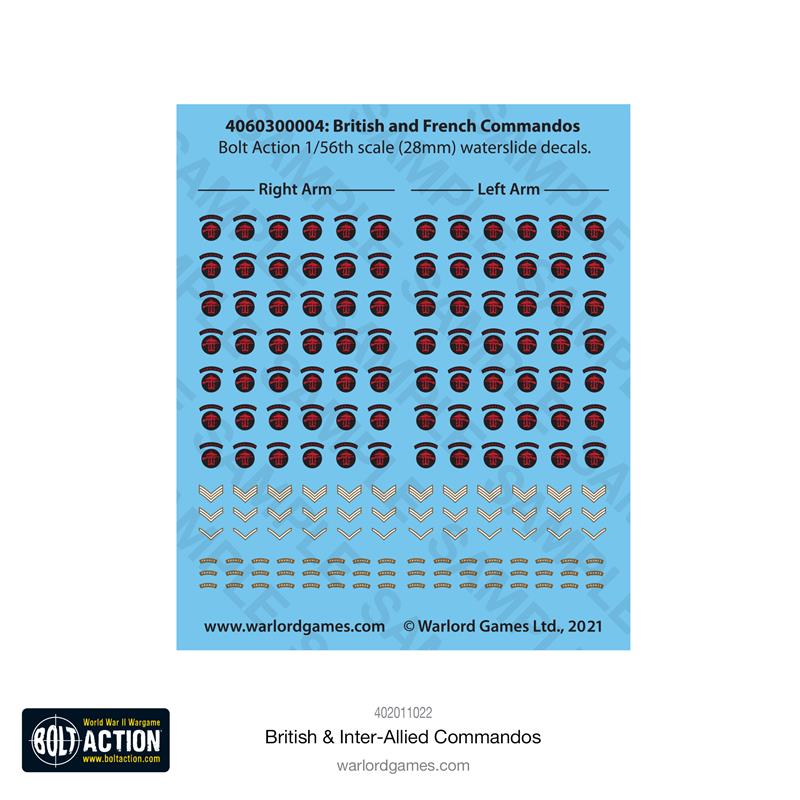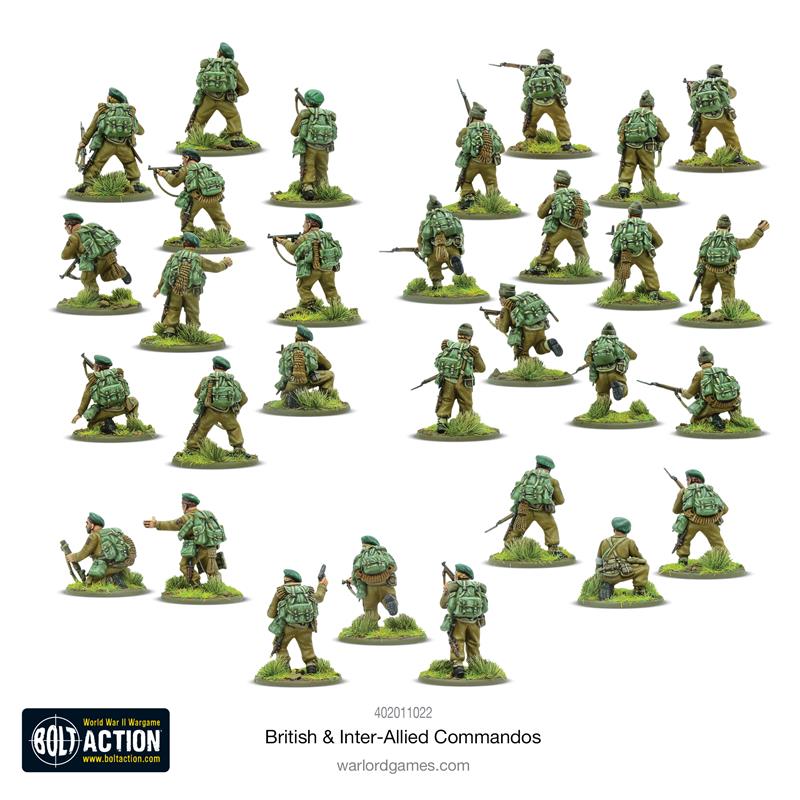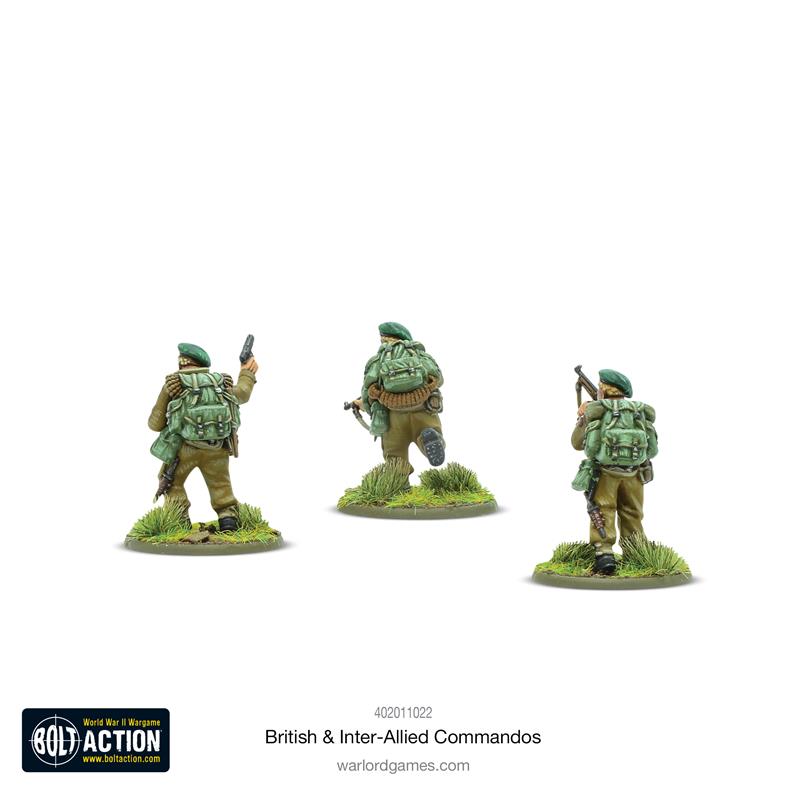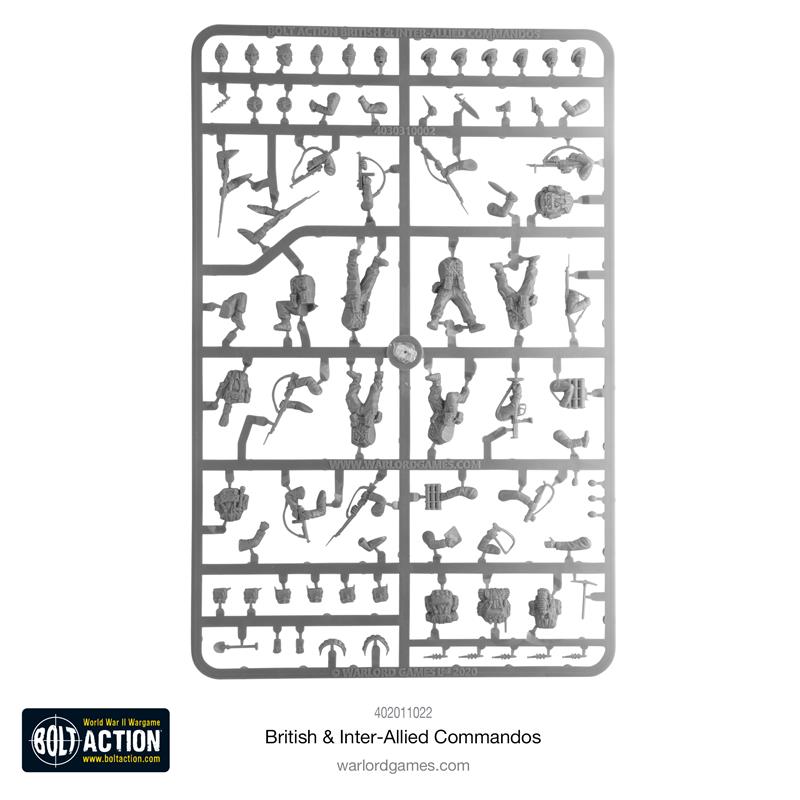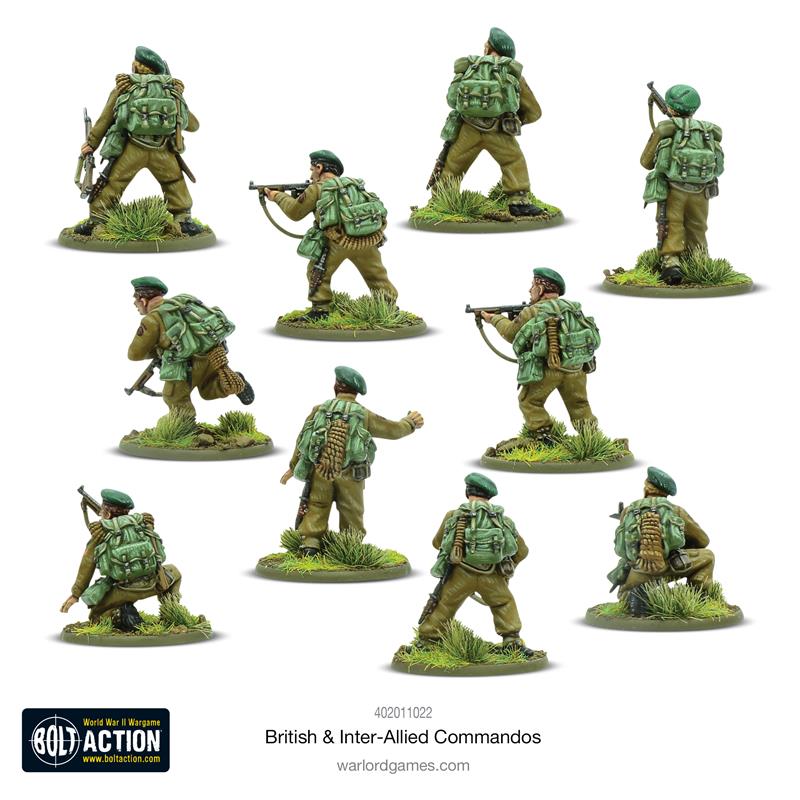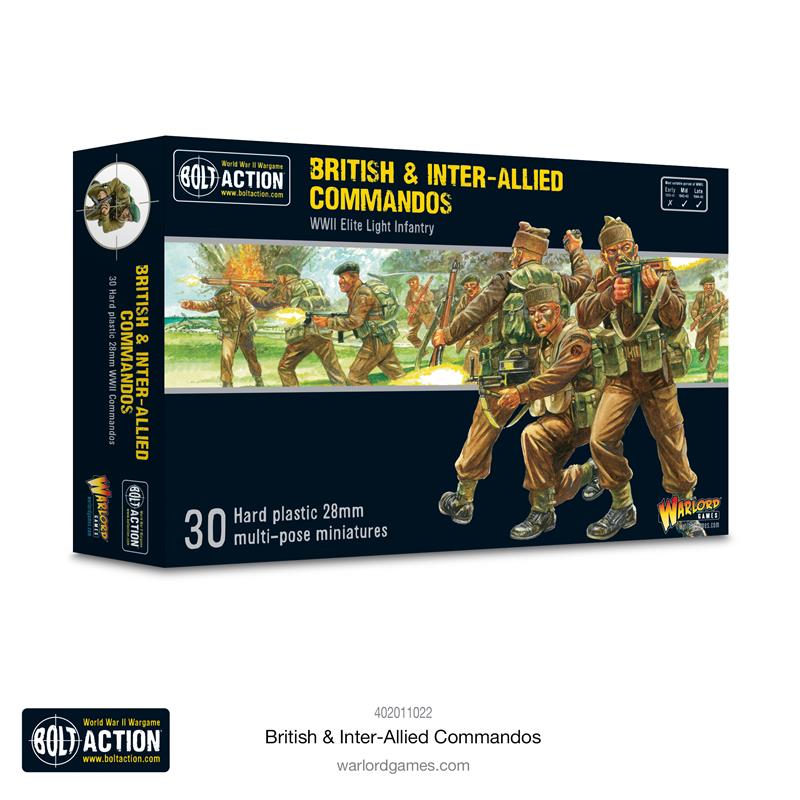

British & Inter-Allied Commandos
The Commandos established an extraordinary reputation for dash and bravery in World War II. Formed in 1940 by order of British Prime Minister Winston Churchill with the express goal of taking the fight back to the apparently unstoppable German armed forces that had thrown the British Expeditionary Force out of France with such apparent ease. An all-volunteer force, they recruited from all parts of the armed services. Indeed there were Army commandos, Naval commandos and the Inter-Allied Commando regiment which included nationalities such as the Belgians, Polish, Dutch and others.
Commandos fought in campaigns in Europe, Burma, Africa and earned battle honours for many famous actions including arguably the greatest raid of all – St Nazaire.
Commandos were fielded in many different ways – from units of less than a full section up to full assault divisions depending on the task at hand. Superbly trained, aggressive in action, well-equipped and deadly in hand-to-hand combat the Commandos were rightly feared by their German, Italian and Japanese foes.
Learn More…
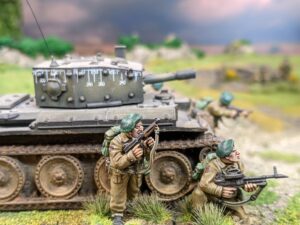
Maj. Gen. RH Dewing, Director of Military Operations and Plans for the War Office, added more definition to the role:
“The Commando organisation is really intended to provide no more than a pool of specialised soldiers from which irregular units of any size and type can be very quickly created to undertake any particular task. The main characteristics of a Commando in action are:
a) Capable only of operating independently for 24 hours;
b) Capable of very wide dispersion and individual action;
c) Not capable of resisting an attack or overcoming a defence of formed bodies of troops, i.e. specialising in hit and run tactics dependent for their success upon speed, ingenuity and dispersion.”
Box Contents


